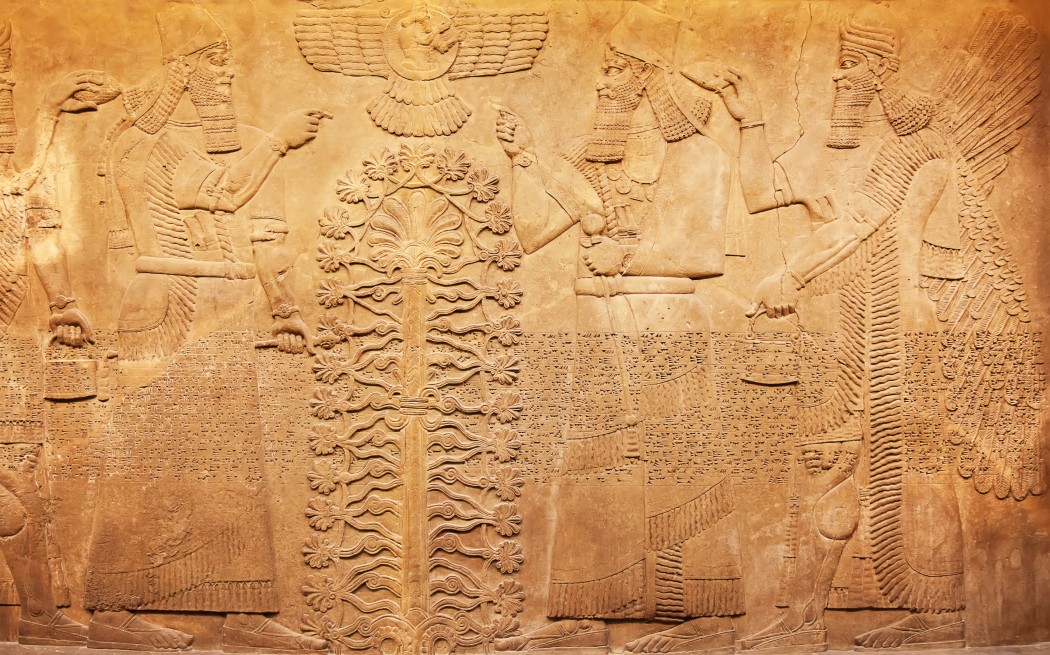Science can explain a lot of things, but so far they’ve come up empty on the use or origin of the ancient artifacts described below. There are no easy answers and those that exist can be easily picked apart, especially the theories concerning aliens, but the truth is, the details of their existence have never been adequately explained. With that in mind, we invite you to take a stab at your own hypotheses.
The Battery of Babylon
Discovered in Khuyut Rabbou’a, a village near Baghdad, Iraq
Forget Duracell, this battery is over 2,000 years old, dating back to sometime between 248 BCE and 226 CE. It’s a 5-inch cylindrical clay vase with a copper rod held inside by asphalt; inside the rod is a smaller oxidized iron rod. Experimental archeologists discovered that if it were filled with acid or an alkaline liquid, it would produce an electric charge, but it also came with some big unanswered questions. Not everyone is convinced it was a battery, but if it was, the best guess for its purpose was for electroplating gold onto objects. But the real mystery is, why was the technology lost and not found for two millenia?
Klerksdorp Grooved Spheres
Discovered near Ottosdal, South Africa
These spheres look man-made, but their geological date means there were no humans around when they first appeared on the scene. They are found in pyrophyllite mined in Ottosdal—pyrophyllite is a very soft secondary mineral formed by sedimentation 2.8 billion years ago. However, the spheres are very fibrous on the inside and harder than steel on the outside—the complete opposite of their surrounding environment. They are also perfectly balanced, so much so that NASA’s instruments aren’t sufficient to measure them. NASA scientists have said that the only way to achieve such near perfect balance is in zero gravity.
The Antikythera Mechanism
Discovered off the coast of Antikythera, Crete
Currently housed at Greece’s National Archeological Museum, this 2,000-year-old relic is thought to be one of the most complex antiques ever found. Although 95 percent of the 2,000 characters on its surface have already been deciphered, a full text of the translation has not been published. It’s believed to be an analog computer used to calculate the movement of stars and planets. The mechanism has been dated to first century BCE and was discovered on a shipwreck from that period. Researchers believe the mechanism was on its way to Julius Caesar among other spoils of war. X-rays have shown that there are at least 30 gears in the device, which may have calculated the movement of the planets and stars when past and future dates were entered into it.
Ancient Airplanes
Found in Saqquara, Egypt, and in Quimbaya, Colombia
Artifacts very closely resembling modern day model airplanes have been found among the remnants of two very distinct cultures. The first was a wooden object found in a tomb in Egypt that looks like a model airplane, and the second are small golden objects found in Colombia that look very much like delta-wing aircraft—it even has what looks like a pilot seat. Some consider these “model planes” as evidence humanity discovered flight much earlier in their history. However, if you subscribe to the Ancient Aliens theory, these objects suggest earlier humans were exposed to mechanical flight technology by extraterrestrial visitors and were simply copying what they had already seen in the sky.
The Ica Stones
Discovered in Ica, Peru
There are some explorers and adventures who believe that a small population of dinosaurs survived long enough to co-exist with humans. They base this assertion on descriptions of large creatures given by the descendants of primitive societies that still live in South America. These communities have survived independently of western intervention or influence for centuries. The stories of these creatures have been passed down through generations, but until the discovery of the Ica Stones, they were nothing but folklore. The stones allegedly show etchings of primitive fish and dinosaurs together with people using what appears to be advanced technology. The problem is that the stones have yet to be accurately dated, so no one knows how old they are or whether there’s any truth to the “dinosaurs among us” stories.
Giant Stone Balls of Costa Rica
Found in the jungles of Costa Rica
These giant stone balls are all over the jungle. They are as smooth as shot-puts, ranging from a few inches to eight feet in diameter. They seem to be made from volcanic rock but there’s no evidence of quarrying near any of them. These things aren’t isolated to one area and no one seems to know why they’re on Earth and where they came from.
The Phaistos Disc
Discovered in Crete
This clay disc is covered in hieroglyphs and remains one of the greatest puzzles in archeology. It was discovered by Italian archaeologist Luigi Pernier in 1908 on the site of the Minoan palace of Phaistos, and dates to the Minoan Bronze age during the second millennium BCE. Some archeologists believe that the hieroglyphs are related to the script used in ancient Crete, only some of which has been deciphered. The Phaistos Disc may be the first example of moveable type, as the glyphs appear to have been pressed into the clay using seals and then fired to harden.
The Roman Dodecahedra
Discovered throughout Europe
These could be a war weapons, candlesticks, children’s toys, weather gauges, astronomical instruments or religious artifacts—experts can only speculate. What we do know is that they are bronze or stone geometric objects with 12 flat pentagonal faces, each with a circular hole in the middle, and that all sides connect to create a hollowed-out centre. About 100 have been discovered all across Europe and they date from between 100 and 300 CE. But there are no references to these objects in Roman records and literature from the period, so theories about their purpose are hotly contested at every turn.
The Coso Artifact
Discovered in the mountains near Olancha, California
On February 13, 1961, Wallace Lane, Mike Mikesell and Virginia Maxey were looking for items to stock their gem and gift shop. They found what they thought was a geode, but turned out to be a cylinder made of a material similar to porcelain, attached to a two-millimetre magnetic metal shaft encased in ancient rock. Its discoverers claim that it’s an ancient spark plug and many believe it is some sort of conductor or electric antenna for a UFO. Others claim that it’s a 1920s spark plug from a Model-T and that the surrounding rock was by no means 500,000 years old.
The Dropa Stones
Discovered in the Baian-Kara-Ula Mountains, China
Skeptics believe these disc-shaped stones are a complete hoax; they were allegedly discovered by an archeological expedition in a cave in the Baian-Kara-Ula Mountains in China among the remains of a primitive people with abnormally large heads and small fragile bodies. Some believe the remains are those of an alien race. The disc-shaped stones have been described as sundial disks with various hieroglyphs spiralling around them and allegedly dated to be 12,000 years old. Believers think they tell the story of these aliens’ journey to earth, but skeptics believe the discs themselves never even existed and their discovery story is an elaborate work of fiction lost in translation.

























